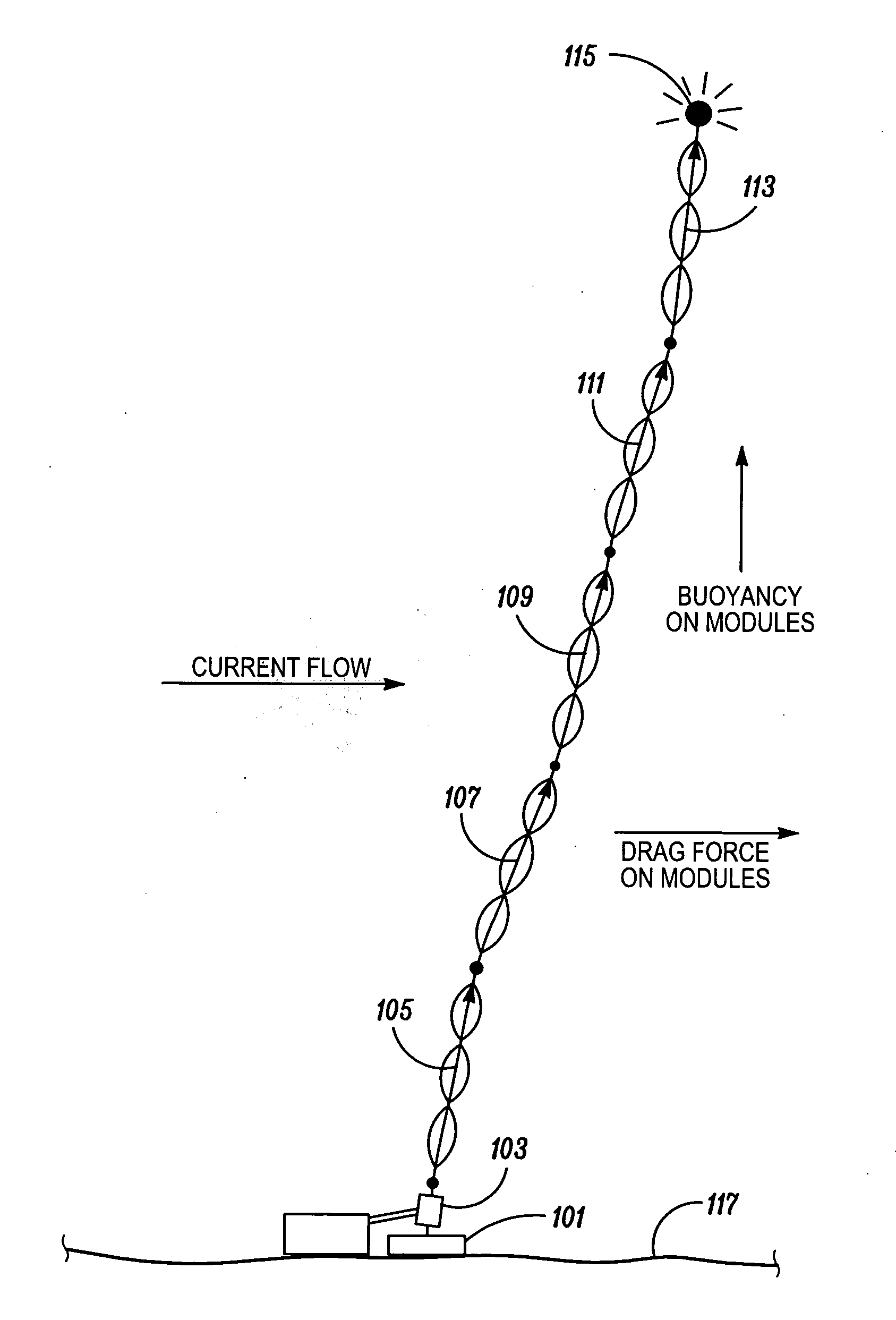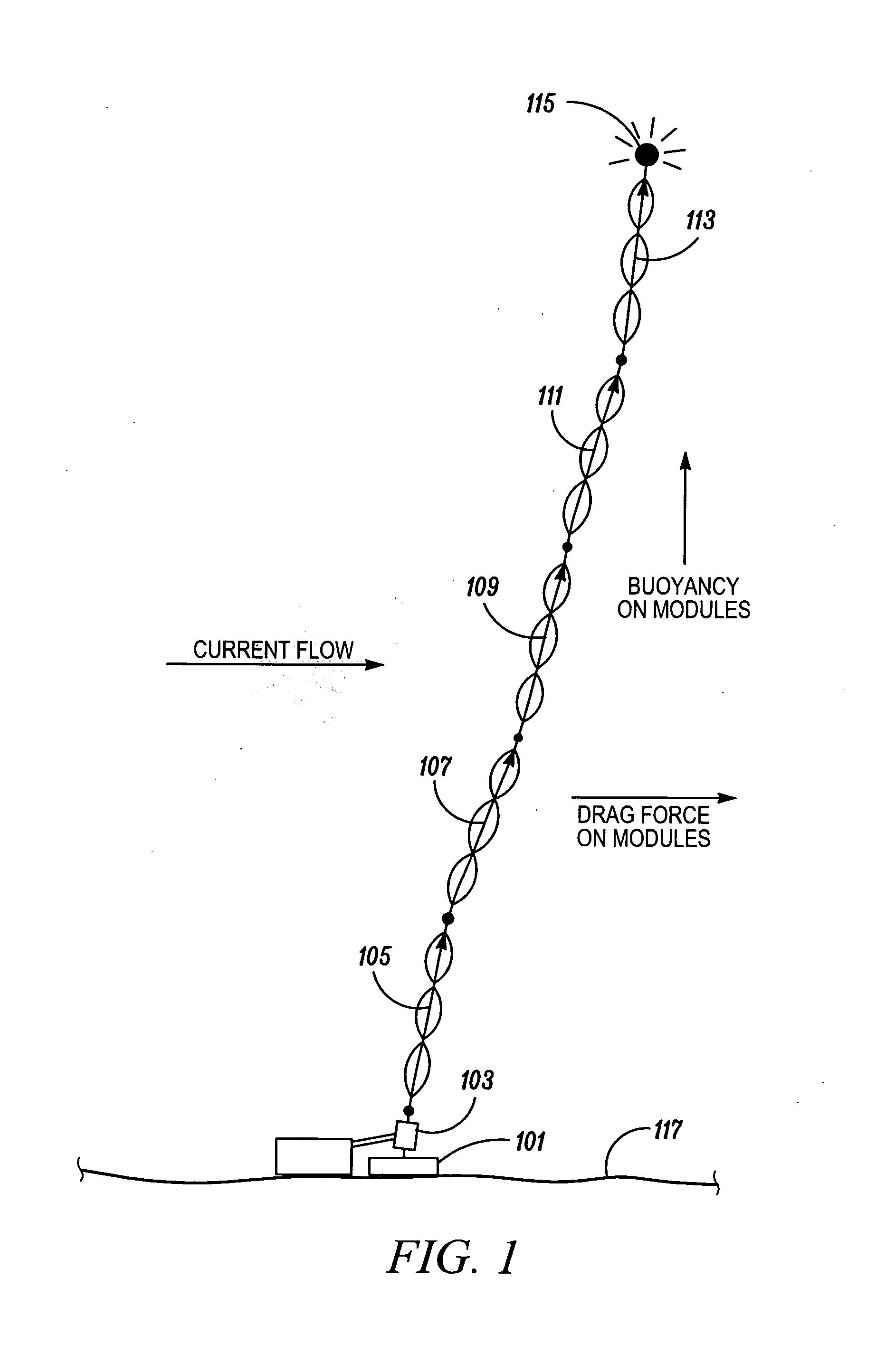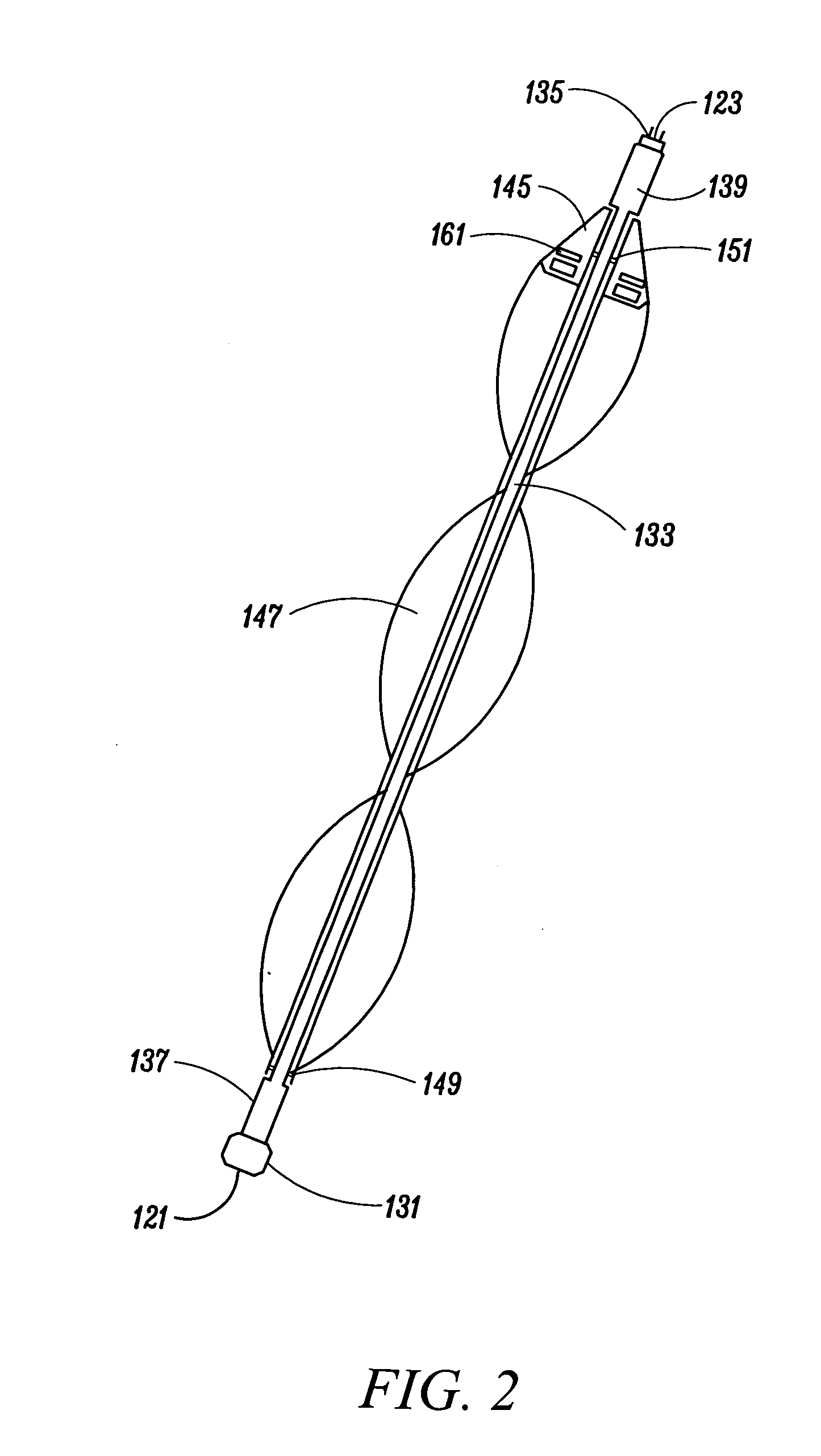Submerged power-generation system
a power generation system and submerged technology, applied in the direction of electric generator control, vessel construction, marine propulsion, etc., can solve the problems of underutilized resources, unresolved problems, and difficult economic use of ocean power, so as to prolong the life of underwater ocean sensors, increase deployment, and rapid installation
- Summary
- Abstract
- Description
- Claims
- Application Information
AI Technical Summary
Benefits of technology
Problems solved by technology
Method used
Image
Examples
Embodiment Construction
[0028]The invention summarized above and defined by the enumerated claims may be better understood by referring to the following detailed description, which should be read with the accompanying drawings. This detailed description of particular preferred embodiments of the invention, set out below to enable one to build and use particular implementations of the invention, is not intended to limit the enumerated claims, but rather, it is intended to provide particular examples of them.
[0029]Typical embodiments of the present invention reside in a power-generation system that is configured to operate submerged in a water body (i.e., a body of water) having a bottom (e.g., a seabed), and being characterized by one or more currents of moving water within the water body.
[0030]With reference to FIGS. 1 & 2, the power-generation system of the present invention is depicted in FIG. 1 in a deployed configuration, submerged within a body of water. The power-generation system serially includes a...
PUM
 Login to View More
Login to View More Abstract
Description
Claims
Application Information
 Login to View More
Login to View More - R&D
- Intellectual Property
- Life Sciences
- Materials
- Tech Scout
- Unparalleled Data Quality
- Higher Quality Content
- 60% Fewer Hallucinations
Browse by: Latest US Patents, China's latest patents, Technical Efficacy Thesaurus, Application Domain, Technology Topic, Popular Technical Reports.
© 2025 PatSnap. All rights reserved.Legal|Privacy policy|Modern Slavery Act Transparency Statement|Sitemap|About US| Contact US: help@patsnap.com



